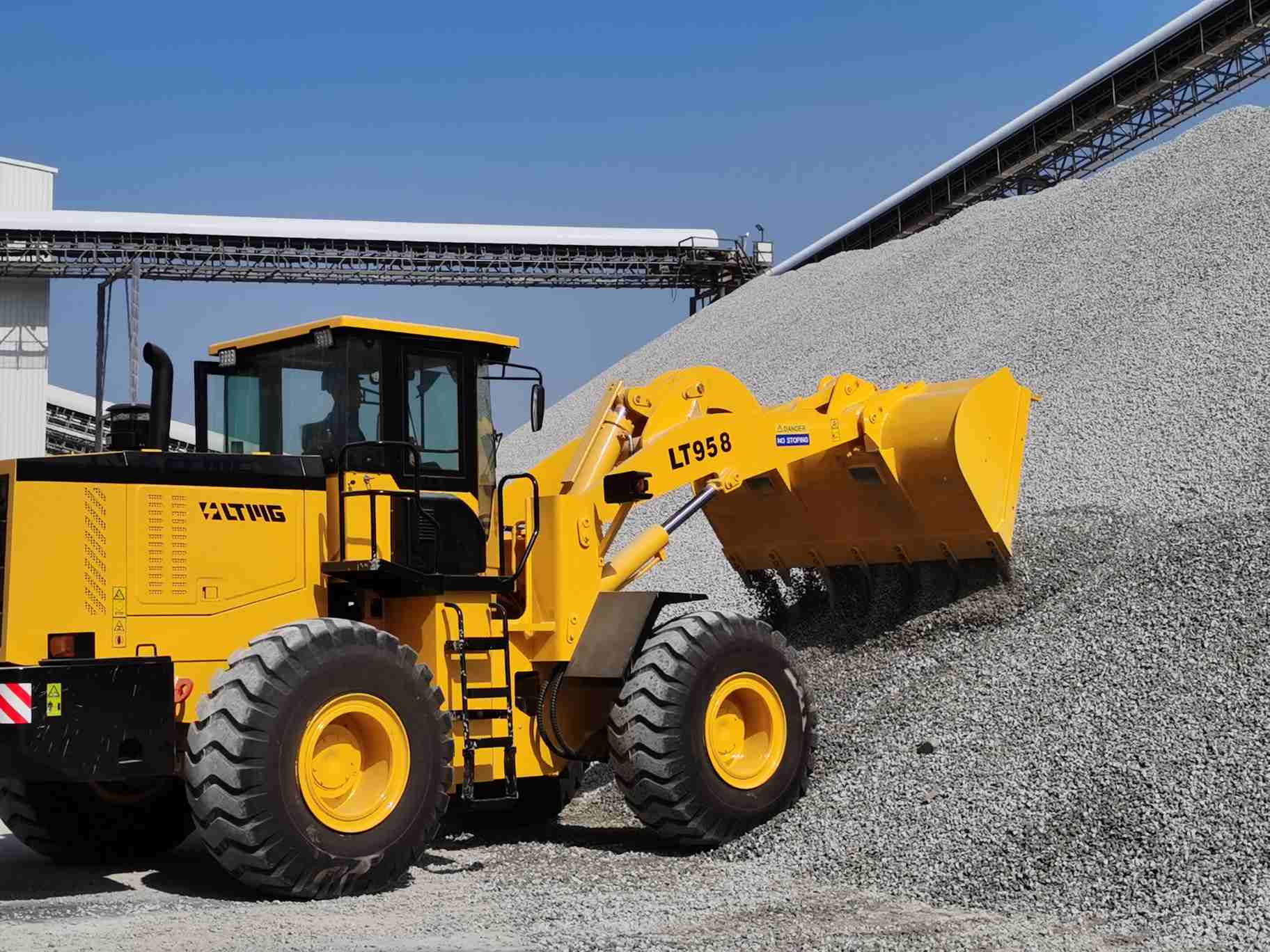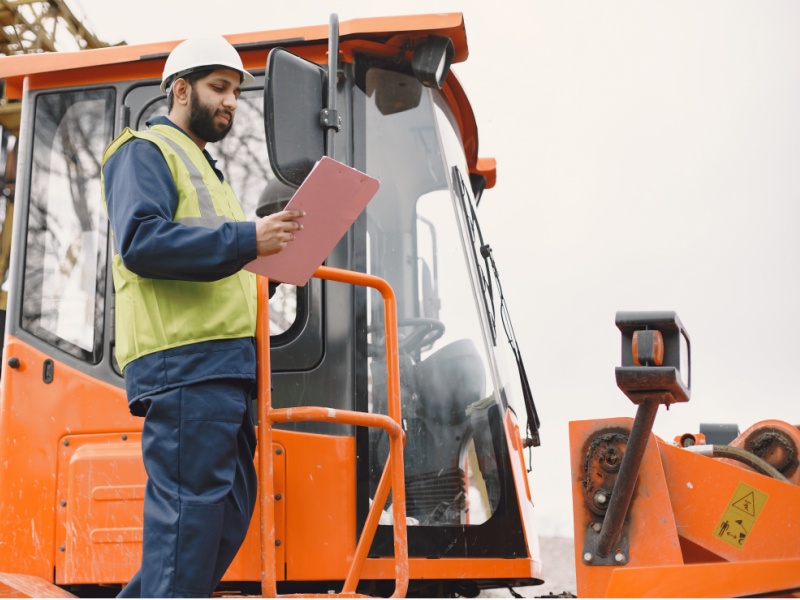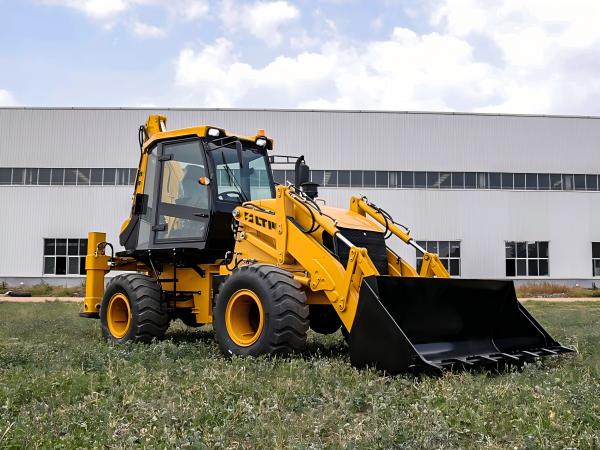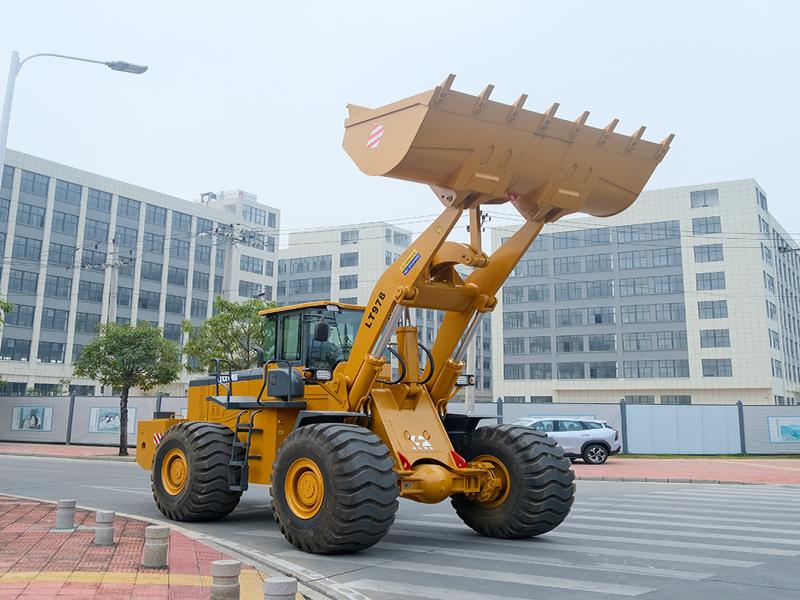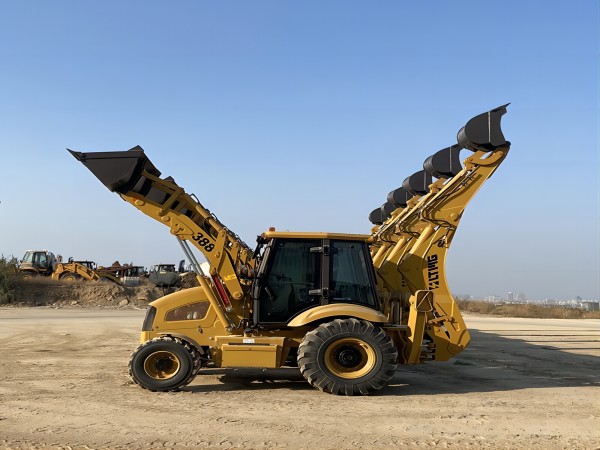Mantenga su equipo funcionando eficientemente: 5 problemas comunes de cargadores y cómo resolverlos rápidamente
Jul 22, 2025
Cargadoras de ruedas Son equipos esenciales en obras de construcción, minas, granjas y puertos. Realizan trabajos pesados de carga, traslado y limpieza a diario. Sin embargo, como cualquier máquina que trabaje duro, las cargadoras inevitablemente se enfrentarán a diversos problemas. Identificar y resolver estos problemas a tiempo no solo minimizará los costosos tiempos de inactividad, sino que también garantizará un funcionamiento seguro y prolongará la vida útil del equipo. Este artículo analizará en profundidad los 5 problemas más comunes de las cargadoras y ofrecerá soluciones claras y viables para ayudarle a mantener su equipo en óptimas condiciones. Problema 1: Respuesta lenta de la transmisión o deslizamiento (problemas de transmisión)La transmisión es el núcleo del sistema de potencia del cargador y su estado afecta directamente las capacidades de desplazamiento y operación del equipo. Síntomas comunes:Los síntomas comunes incluyen cambios difíciles, impactos fuertes, deslizamiento de marchas o interrupción de la potencia durante la conducción, zumbidos anormales o crujidos de la transmisión, temperatura alta del aceite de la transmisión y alarmas en el tablero. Causas fundamentales:Las causas fundamentales incluyen problemas de aceite, como bajo nivel de aceite de transmisión, contaminación del aceite o uso de un tipo incorrecto de aceite; bloqueo del filtro, es decir, el filtro de la transmisión no se ha reemplazado durante mucho tiempo, lo que resulta en un circuito de aceite bloqueado; desgaste interno, como desgaste de componentes internos como discos de embrague, placas de fricción o engranajes; y falla del control electrónico, es decir, falla de la válvula de control o válvula solenoide, lo que resulta en la incapacidad de ejecutar correctamente el comando de cambio. Solución:Revise el aceite regularmente: Revise el nivel de aceite de la transmisión diariamente y reemplácelo y reemplácelo estrictamente según el ciclo recomendado por el fabricante. Esta es la medida preventiva más básica e importante.Utilice el aceite adecuado: asegúrese de utilizar siempre un aceite de transmisión específico que cumpla con las especificaciones del equipo.Preste atención a la limpieza: mantenga la transmisión y el radiador limpios para garantizar un buen rendimiento de disipación de calor.Diagnóstico profesional: Si el problema persiste, especialmente si se trata de ruido interno o deslizamiento severo, detenga la operación inmediatamente y comuníquese con un técnico profesional para que realice una inspección para evitar la expansión de la falla. Problema 2: Fallas del sistema hidráulicoEl sistema hidráulico es el "músculo" del cargador, responsable de todas las acciones clave, como levantar la pluma y voltear el cucharón. Síntomas comunes:La velocidad de elevación de la pluma o de volteo del cucharón disminuye considerablemente. Incluso con un régimen del motor alto, la fuerza de elevación se percibe insuficiente. La bomba hidráulica emite un silbido agudo. Hay indicios evidentes de fugas de aceite en las juntas o cilindros de las tuberías hidráulicas, y la temperatura del aceite hidráulico es demasiado alta. Causa raíz:La contaminación del aceite es la principal causa de fallas en los sistemas hidráulicos. La entrada de polvo, humedad o partículas metálicas en el aceite desgasta rápidamente la bomba, la válvula y el cilindro. La obstrucción del elemento filtrante (incluidos los filtros de succión y retorno) provoca un suministro insuficiente de aceite. El nivel de aceite en el depósito hidráulico es demasiado bajo, lo que provoca la inhalación de aire. El desgaste de componentes esenciales, como la bomba hidráulica, la válvula de control principal o los sellos internos del cilindro, provoca fugas internas e imposibilidad de generar presión. Solución:Mantenga el aceite limpio: Cambie regularmente el aceite hidráulico y todos los filtros. Al añadir o cambiar el aceite hidráulico, asegúrese de que el entorno y las herramientas estén limpios.Inspección diaria: Verifique el nivel de aceite hidráulico antes de comenzar a trabajar todos los días, inspeccione todas las tuberías y juntas hidráulicas y solucione las fugas a tiempo.Evite la sobrecarga: el funcionamiento con sobrecarga a largo plazo acelerará el desgaste de las bombas y válvulas hidráulicas.Prueba de presión profesional: si hay una debilidad en el movimiento, solicite a los técnicos que utilicen un manómetro profesional para probar la presión del sistema y localizar con precisión el punto de falla. Problema 3: Dificultad para arrancar el motor o humo negro (Problemas del motor)El motor es el corazón del cargador y cualquier problema con él puede provocar que el equipo se detenga por completo. Síntomas comunes:Los síntomas comunes incluyen dificultad para arrancar cuando el motor está frío o caliente, lo que requiere múltiples intentos, potencia insuficiente al trabajar, sensación de "débil", humo de color anormal que sale del tubo de escape (humo negro: combustión incompleta; humo azul: aceite quemado; humo blanco: el combustible contiene agua o ingresa refrigerante al cilindro), y la temperatura del agua del motor es demasiado alta, o hay un sonido de golpeteo anormal cuando está en funcionamiento. Causas fundamentales:Las causas fundamentales incluyen el sistema de combustible, como el filtro diésel obstruido, la mala atomización del inyector o la mala calidad del combustible; en el sistema de admisión, el filtro de aire está severamente obstruido, lo que resulta en una entrada de aire insuficiente; en el sistema de enfriamiento, el radiador está obstruido, el termostato está defectuoso o el refrigerante es insuficiente, lo que resulta en el sobrecalentamiento del motor; también hay problemas con el sistema de lubricación, es decir, baja presión de aceite o aceite insuficiente. Soluciones:Implemente estrictamente el mantenimiento: de acuerdo con el manual de mantenimiento, reemplace los "tres filtros" (filtro del motor, filtro diésel, filtro de aire) y el aceite del motor a tiempo.Asegúrese de la calidad del combustible: agregue diésel limpio y calificado de los canales regulares.Mantenga limpio el radiador: utilice periódicamente aire comprimido para eliminar el polvo y los residuos de la superficie del radiador.Preste atención al tablero: Preste siempre atención a indicadores clave como el indicador de temperatura del agua y el indicador de presión de aceite, y detenga la máquina inmediatamente para su inspección si detecta alguna anomalía. Para problemas como la emisión de humo negro, generalmente comience por revisar el filtro de aire y el filtro de diésel. Problema 4: Desgaste excesivo o daño de los neumáticos (Problemas de neumáticos/ruedas)El neumático es la única parte del cargador que está en contacto con el suelo y su estado afecta directamente la tracción, la estabilidad e incluso la seguridad operativa del equipo. Síntomas comunes:Desgaste desigual de la banda de rodadura, como desgaste excesivo en el medio, los lados o en partes, grietas y protuberancias en la pared lateral del neumático o perforación de la banda de rodadura por objetos afilados, golpes anormales o sacudidas de la carrocería durante la conducción, caída frecuente de la presión de los neumáticos, necesidad frecuente de reposición de aire, pernos del cubo de la rueda flojos o deformación y grietas en la llanta. Causas fundamentales:Presión inadecuada de los neumáticos. Una presión demasiado alta provocará un mayor desgaste en la zona media de la banda de rodadura. Una presión demasiado baja provocará desgaste en ambos lados y aumentará el riesgo de reventón. La sobrecarga prolongada, es decir, el funcionamiento continuo por encima de la carga nominal, ejercerá una gran presión sobre la estructura del neumático. Las condiciones de trabajo rigurosas, como la conducción frecuente sobre piedras afiladas, residuos de construcción o terrenos irregulares, también pueden ser perjudiciales. Los malos hábitos de conducción, como las curvas cerradas, los giros bruscos y las precipitaciones hacia la pila de materiales a alta velocidad, desgastarán gravemente los neumáticos. También existe la negligencia en el mantenimiento, es decir, no limpiar a tiempo las piedras incrustadas en el dibujo y no apretar los pernos del cubo de la rueda según el par especificado. Solución:Revisión diaria de la presión de los neumáticos: Con el neumático frío, utilice un manómetro para comprobar la presión y ajustarla al valor recomendado por el fabricante antes de empezar a trabajar cada día. Intensifique la inspección visual: Revise el vehículo para comprobar si hay cortes o protuberancias visibles en la superficie del neumático y limpie a tiempo cualquier piedra u otro objeto extraño incrustado en la banda de rodadura.Operación de conducción estándar: Evite la sobrecarga, reduzca la conducción a alta velocidad y los giros bruscos, y acérquese con suavidad al palear materiales.Ajuste e inspección regulares: Utilice una llave dinamométrica para revisar y apretar regularmente todos los pernos del cubo de la rueda. Compruebe también si la llanta está deformada o agrietada.Elija el neumático adecuado: elija neumáticos con patrones correspondientes y grados de resistencia al desgaste de acuerdo con las principales condiciones de trabajo (como movimiento de tierras, patio de piedra, patio de carbón, etc.). Problema 5: Falla del sistema eléctrico (problemas eléctricos)Los cargadores modernos dependen cada vez más de sistemas eléctricos complejos para controlar y monitorear el estado del equipo. Síntomas comunes:Los faros delanteros y las luces de trabajo están apagados o parpadean, el motor de arranque no responde o no puede girar, la batería se descarga con frecuencia y las luces indicadoras del tablero, los instrumentos o las pantallas no funcionan correctamente. Causas fundamentales:Problemas con la batería, como envejecimiento de la batería, corrosión en la cabeza del pilote o conexiones sueltas; falla del generador, es decir, el generador no puede cargar la batería normalmente; daños en la línea, como envejecimiento, rotura, cortocircuito o mal contacto de los conectores; y fusible quemado, es decir, una sobrecarga o cortocircuito en el circuito hace que el fusible se queme. Solución:Mantenimiento de la batería: Mantenga los terminales de la batería limpios y bien apretados, y aplique mantequilla para evitar la corrosión. Revise el nivel de electrolito regularmente (si corresponde).Revise el generador: Verifique la tensión de la correa del generador regularmente. Si la batería se descarga con frecuencia, revise el voltaje de carga del generador.Proteger el cableado: Proteja el mazo de cables de todo el vehículo para evitar que se apriete, se frote o se exponga a aceite y altas temperaturas.Compruebe el fusible: si un aparato eléctrico no funciona, compruebe primero la caja de fusibles correspondiente. Conclusión: más vale prevenir que curarEl manejo de una cargadora de ruedas requiere establecer una estricta inspección diaria y un plan de mantenimiento regular, de modo que pueda descubrir y solucionar la mayoría de los problemas mencionados anteriormente con antelación. La gestión oportuna de pequeños problemas es la mejor manera de evitar que se conviertan en costosas revisiones y largos tiempos de inactividad. Incorpore el mantenimiento preventivo a su trabajo diario y su cargadora recuperará su inversión con mayor eficiencia, mayor vida útil y un rendimiento más seguro.

